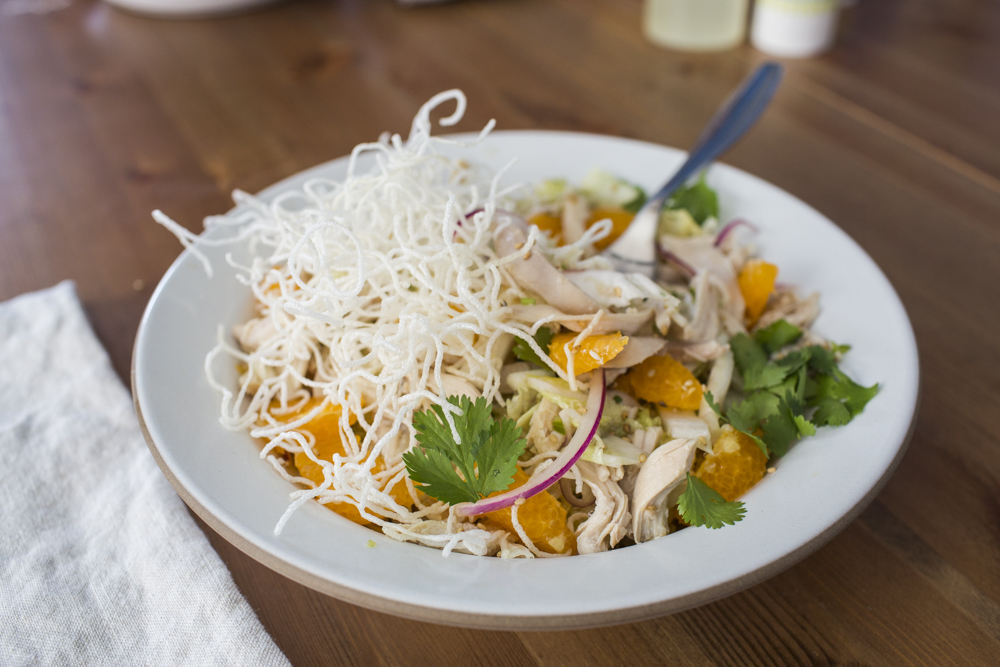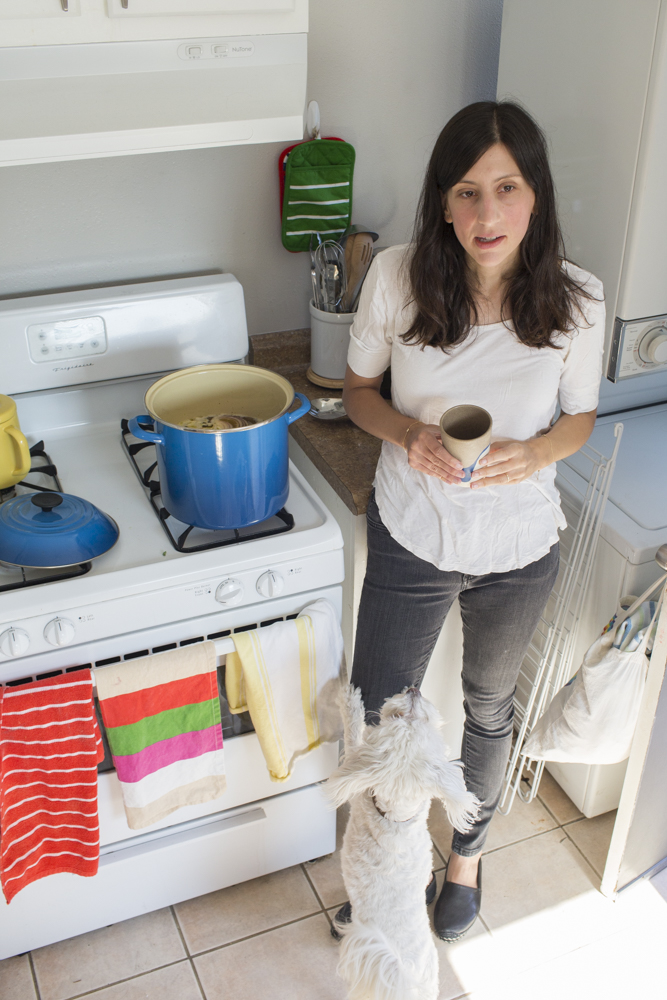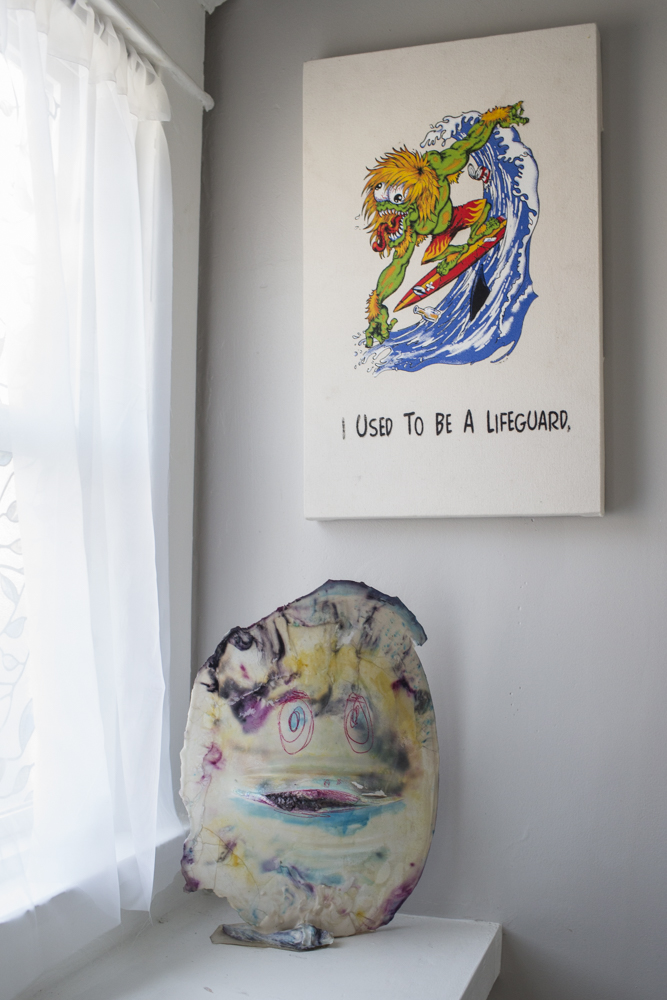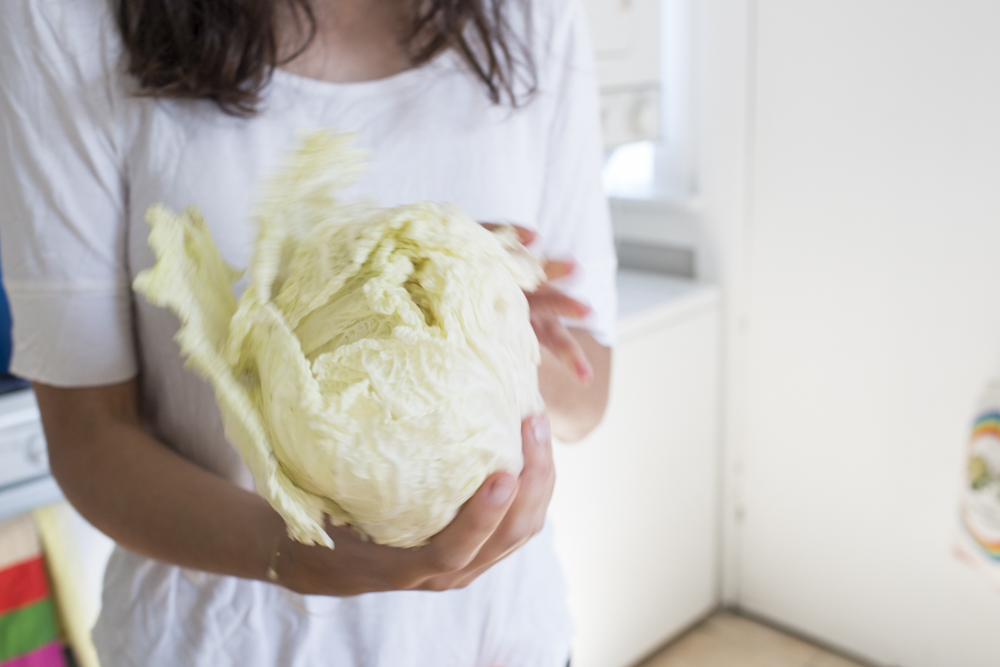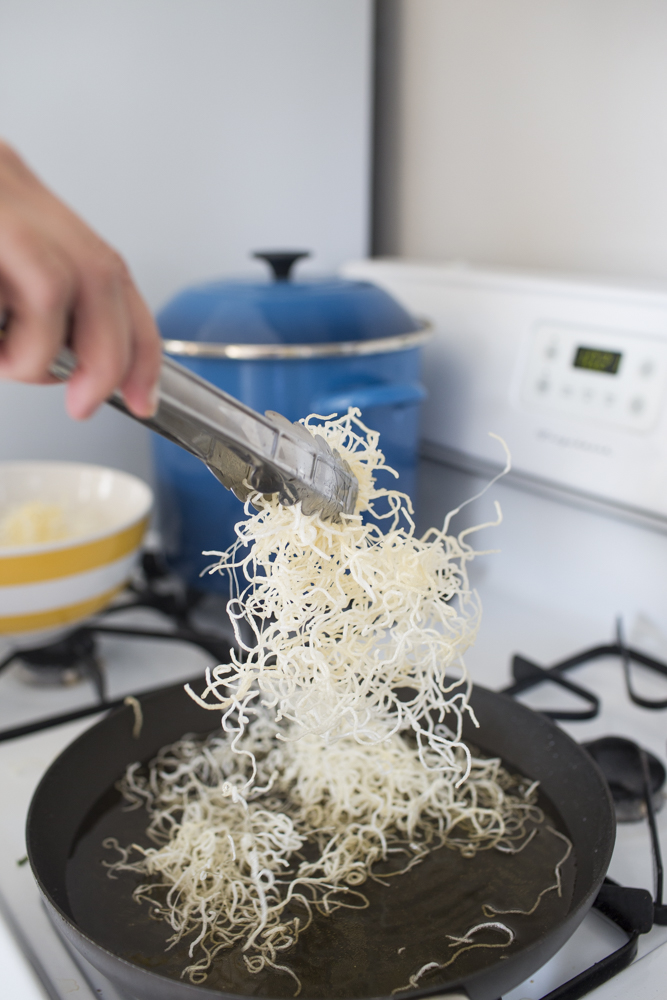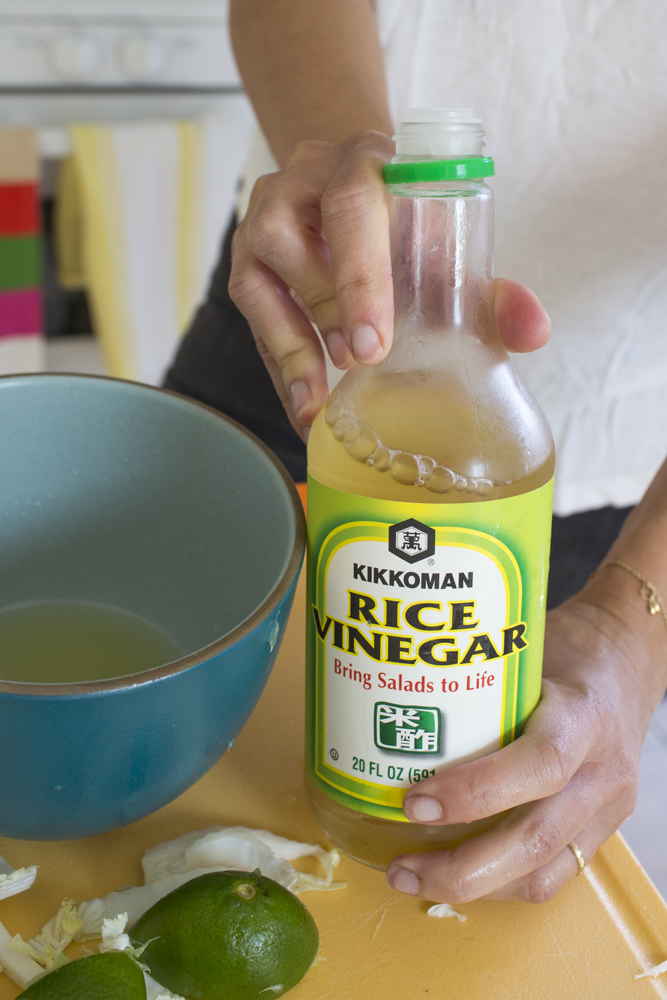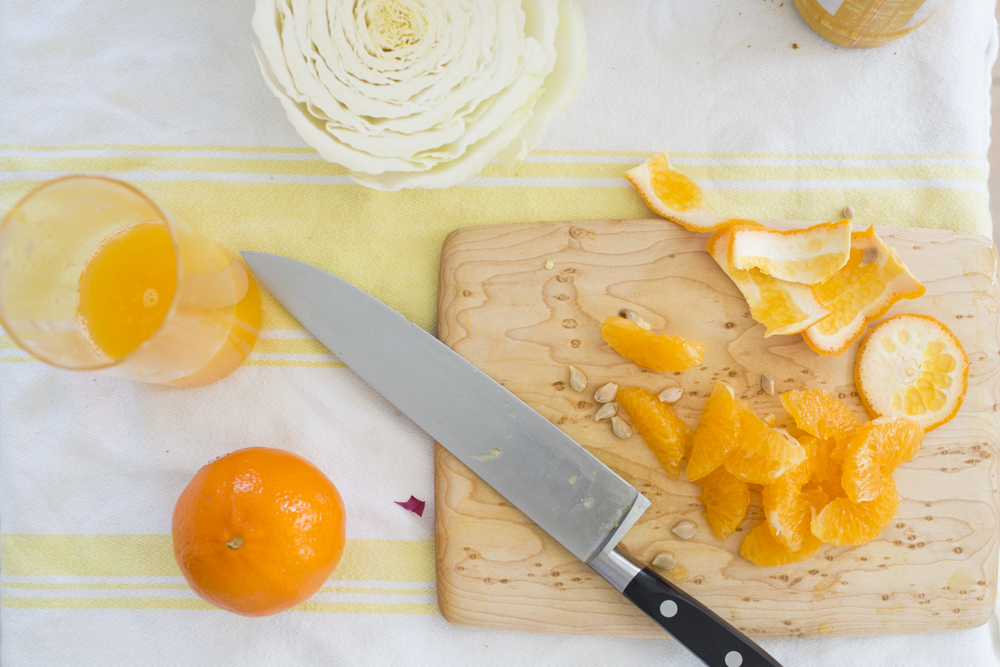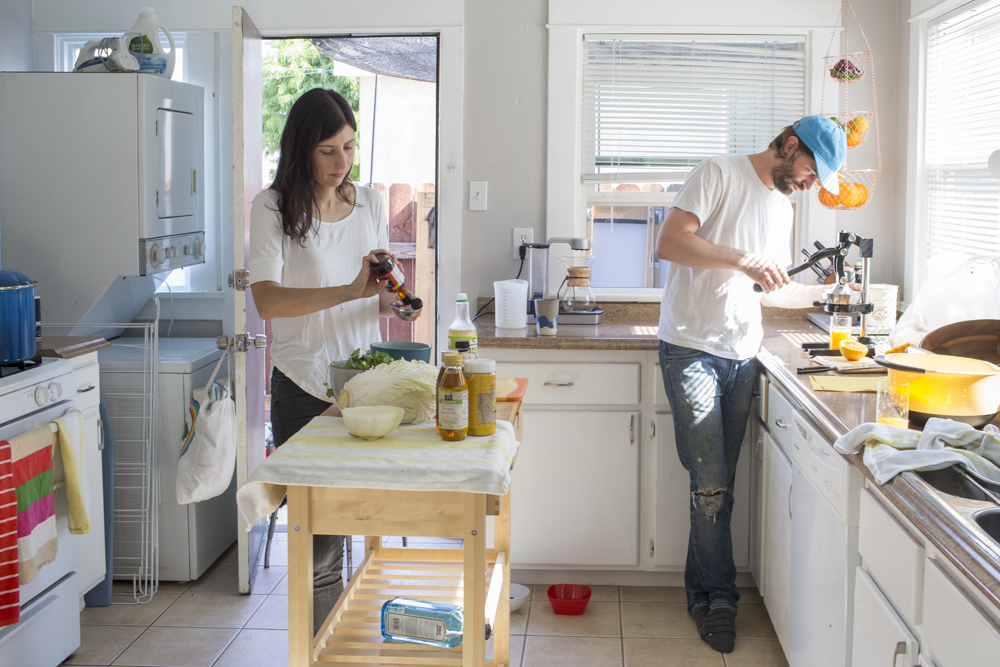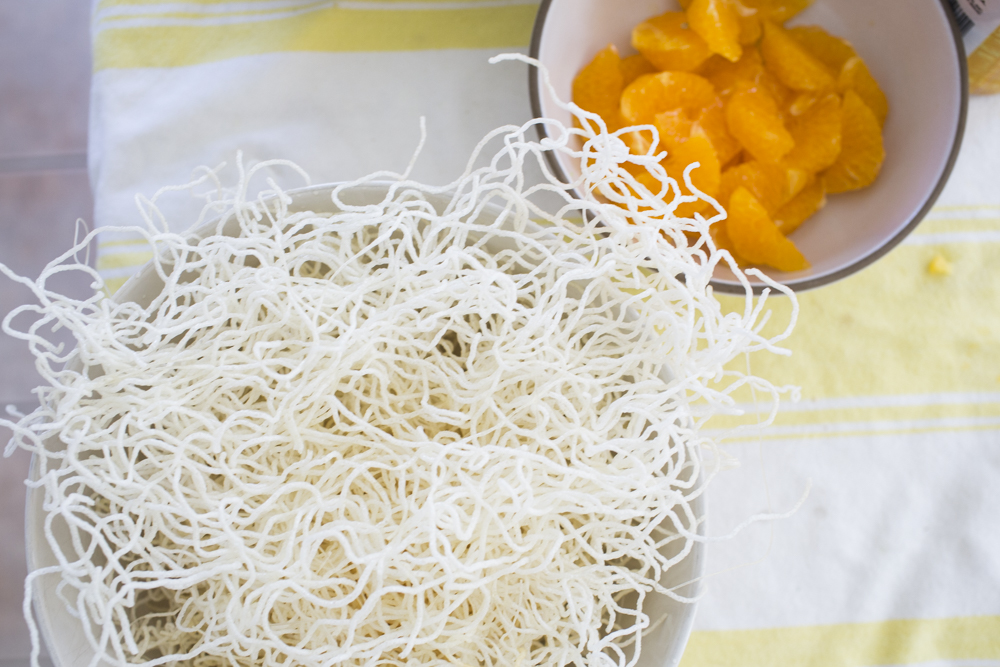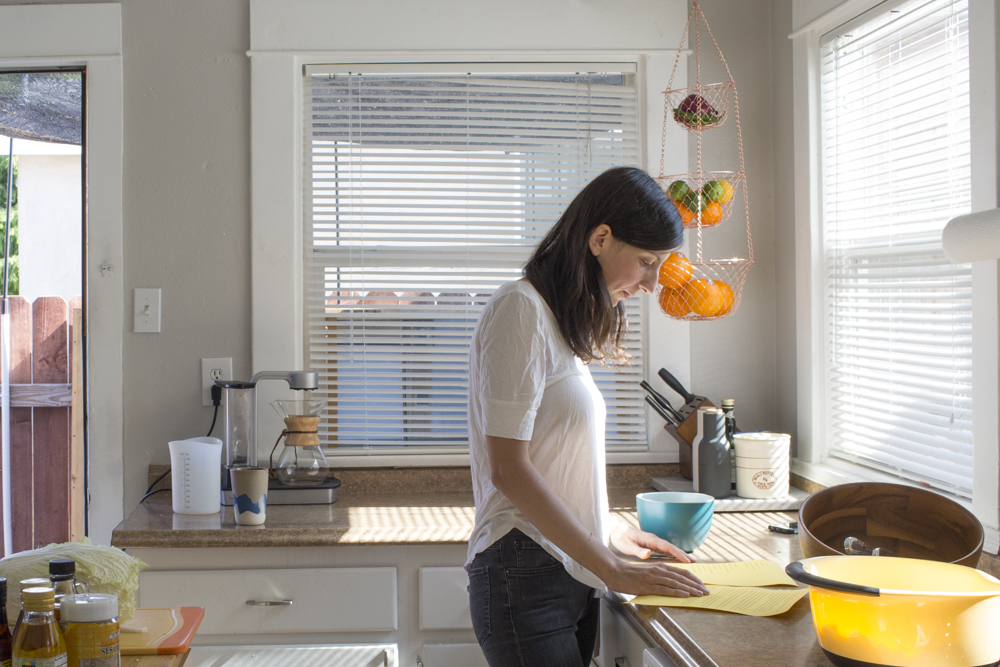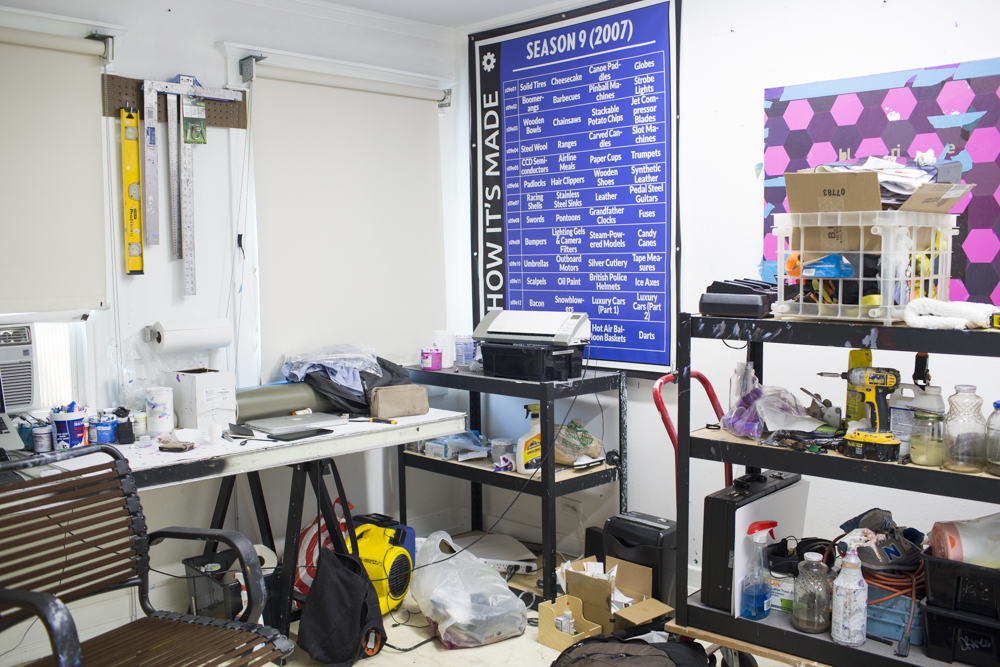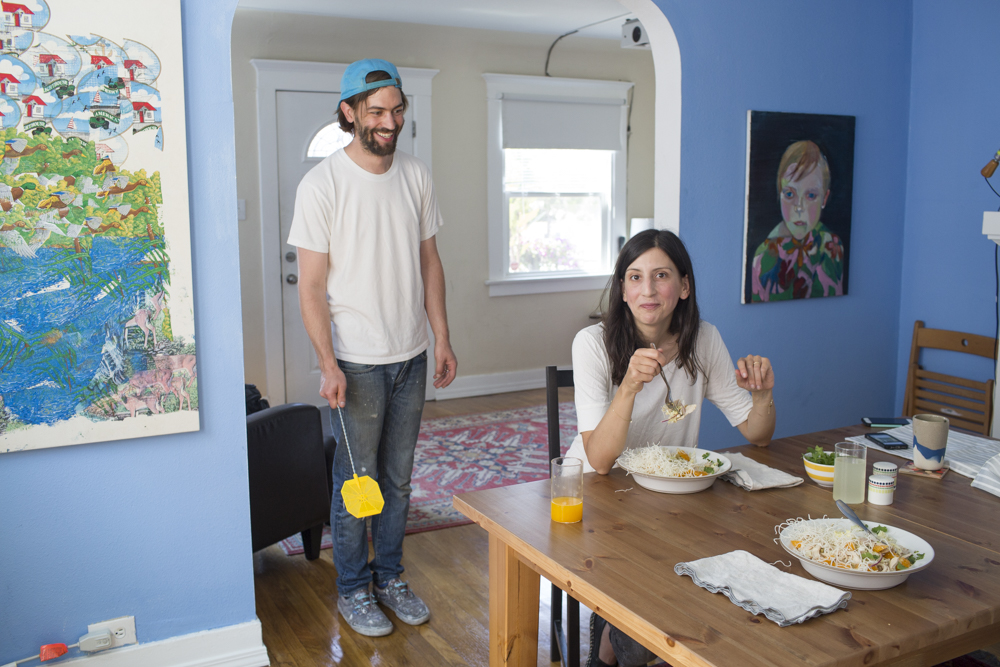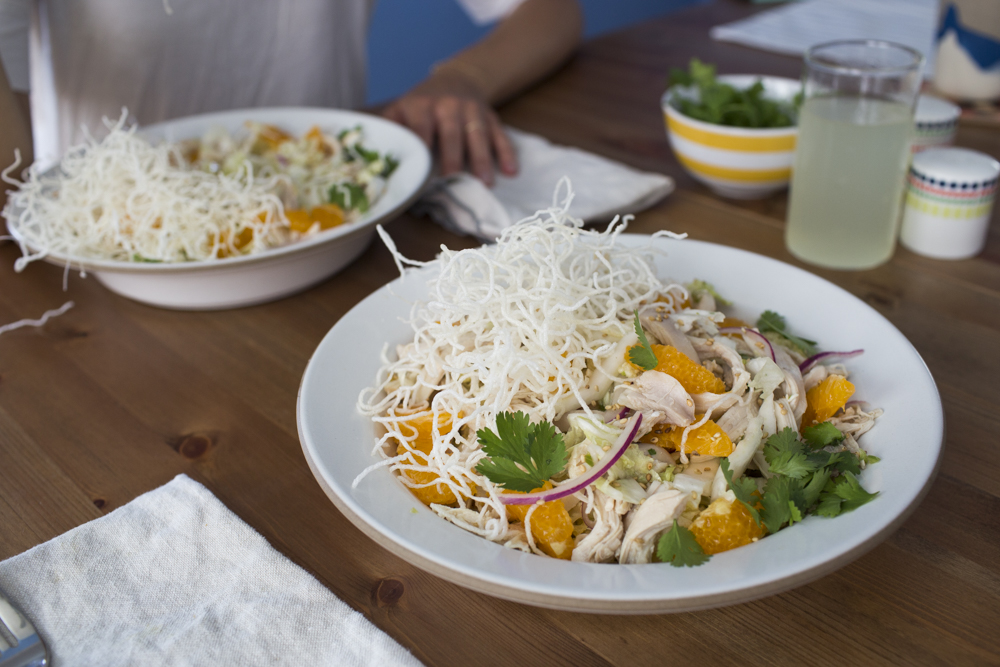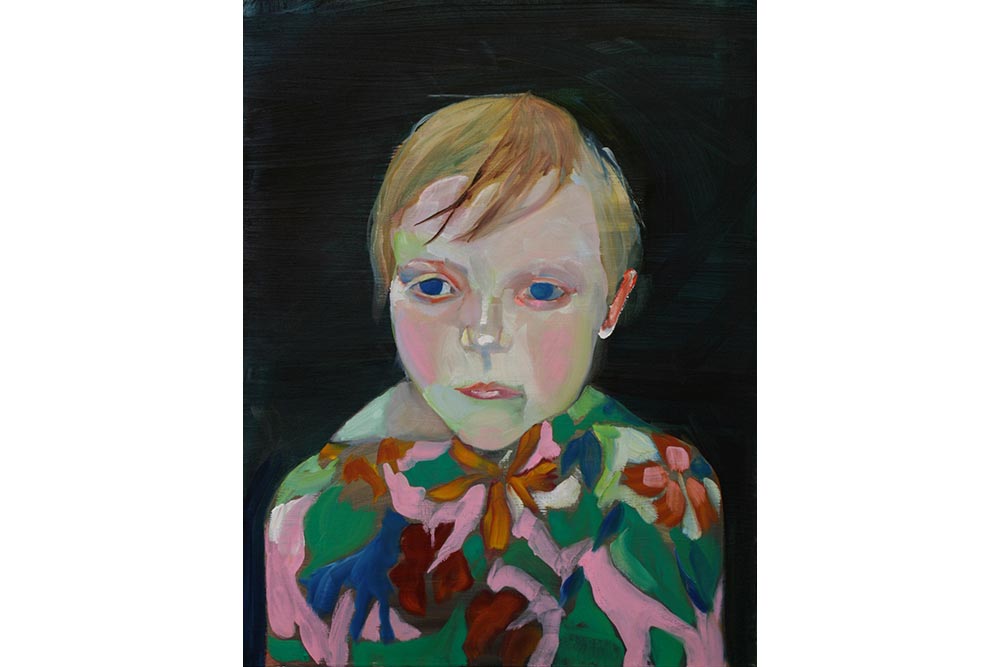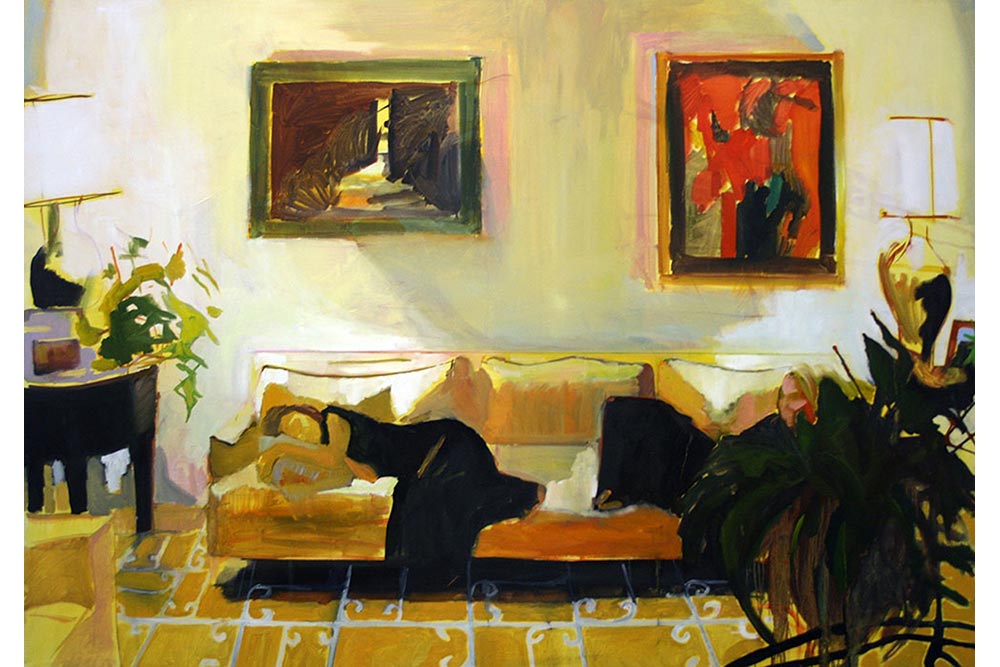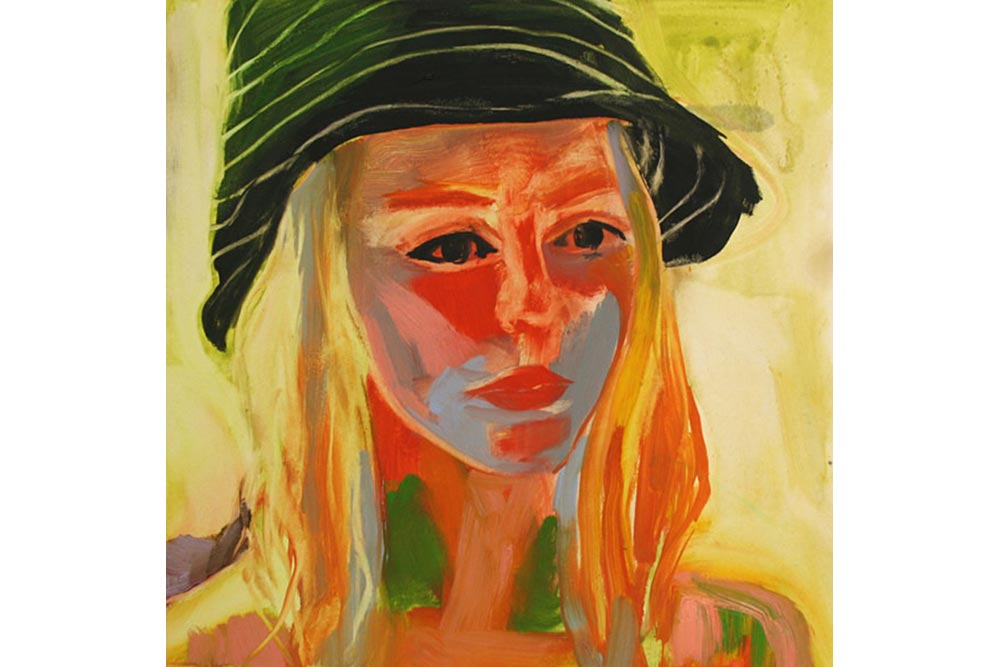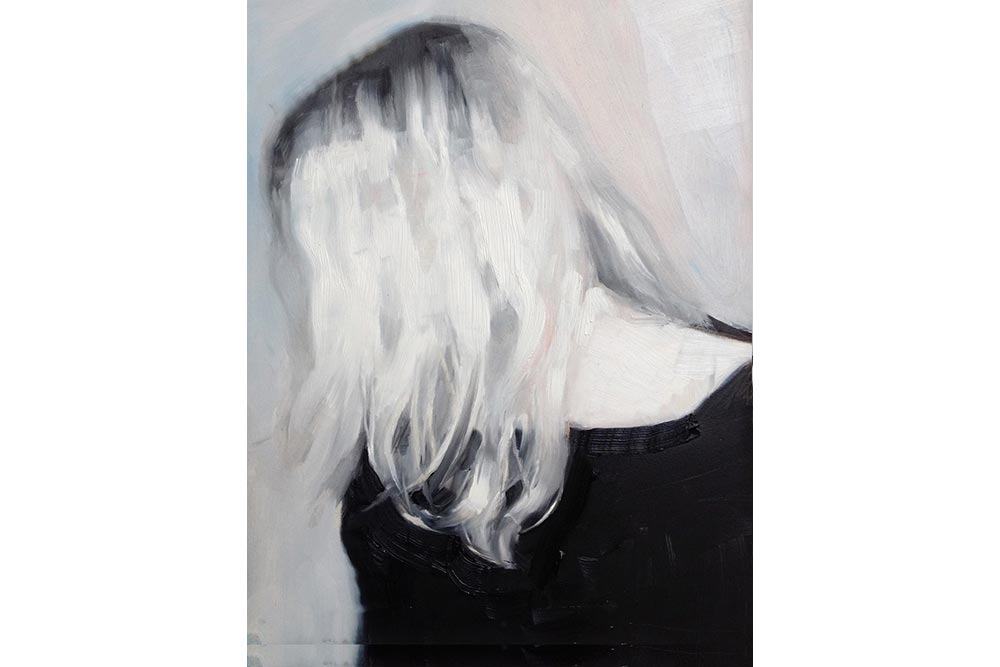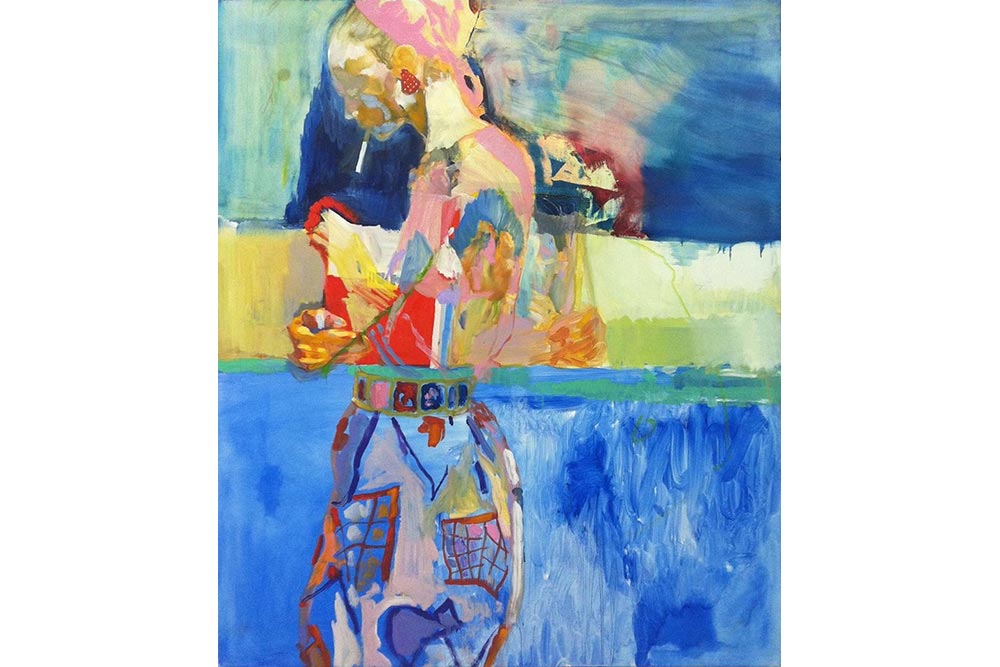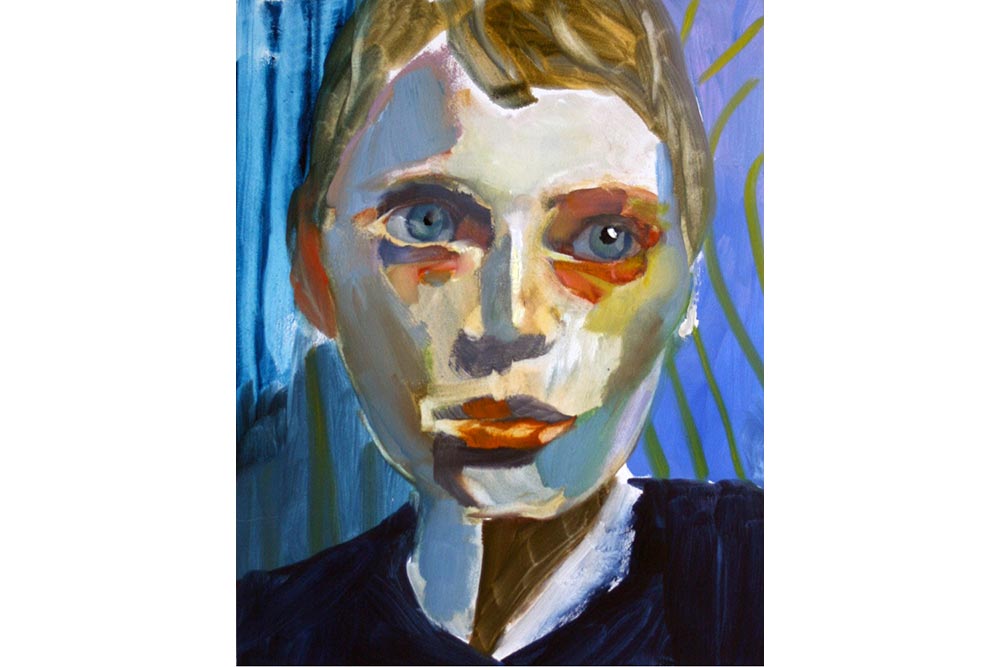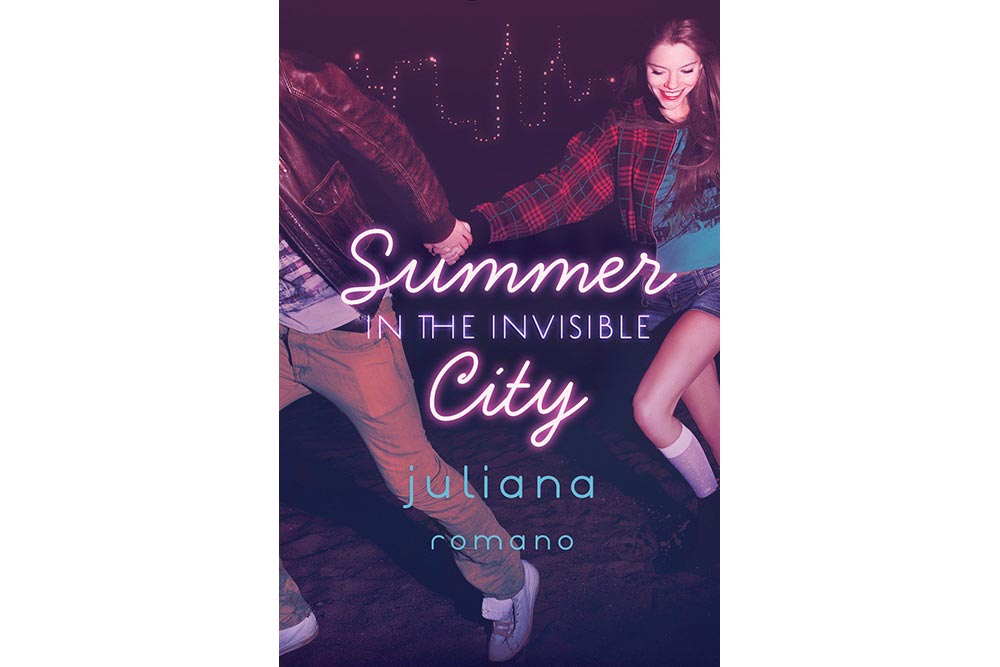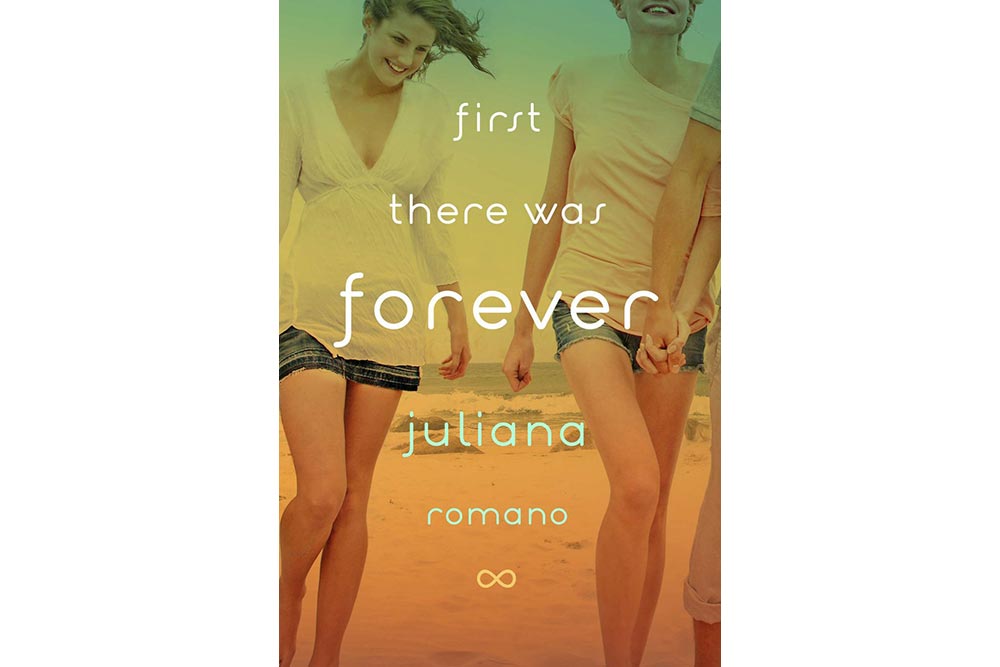Napa Cabbage, Mandarin Orange, Poached Chicken and Crispy Maifun Noodles
Juliana Romano’s ‘Chinese’ Chicken Salad
POSTED UNDER
- Asian,
- California,
- los angeles
INGREDIENTS
- chicken,
- CILANTRO,
- citrus,
- maifun,
- napa cabbage,
- sesame seeds
NOTES
Juliana and I share a furtive love of the most 90s salad of all – the Chinese chicken salad. There is clearly nothing Chinese about this salad at all, but we all know it when we see it – mandarin oranges, napa cabbage, fried wontons and shredded poached chicken. This is our upscale take on the classic. We fried our own noodles, a fast stovetop magic trick you have to try at home. We used fresh, citrus (see link for how to supreme cut) and poached the chicken ourselves (if you want to save time, shred a store-bought rotisserie chicken instead). The way to slice the mandarin oranges is crucial. Click here to learn how to supreme cut.
RECIPE
DIFFICULTY
HARD
SERVES
4
PREP TIME
90 MINS
Poached Chicken
-
2(1.3 - 1.5lb)chicken leg quarters (thighs with drumsticks attached)
-
2(1lb)chicken breasts, with skin
-
1/4cupolive oil
-
1/2mediumwhite onion, peeled
-
1/2bulbgarlic, quickly smashed
-
2stalkscelery
-
1mediumcarrot
-
1tspkosher salt
-
1tbssoy sauce
-
1tspwhite peppercorns
-
2bay leaves
-
1stalklemongrass, chopped (optional)
Salad
-
4cupsnapa cabbage, sliced thin
-
3smallmandarin oranges
-
1/4smallred onion, sliced paper thin
-
1tbstoasted sesame seeds
-
12ouncespeanut oil
-
1/4packagedried maifun Asian rice noodles
-
kosher salt to taste
-
1/4cupfresh cilantro, roughly chopped
Dressing
-
4limesjuiced
-
3tbsseasoned rice wine vinegar
-
3tspfish sauce
-
1 1/2tspsoy sauce
-
1 1/2tspmaple syrup
-
1clovegarlic, micrograted
-
3/4tspminced serrano chile
-
3tbssesame or peanut oil
POSTED UNDER
- Asian,
- California,
- los angeles
INGREDIENTS
- chicken,
- CILANTRO,
- citrus,
- maifun,
- napa cabbage,
- sesame seeds
Painter/writer Juliana Romano was my first studio-mate in Los Angeles in 2008. She had recently received her MFA at UCLA and I was running a not-for-profit art space called Workspace in the front of our studio and working as a photographer on horror films. Juliana made big paintings that were almost Baroque in their color and texture, but whose source imagery was plucked from the frames of your favorite pop TV and film. (In my opinion, Kirsten Dunst never looked so good). Juliana was selling-out exhibitions before most of us young artists could figure out what we were even making. And all the while, she had the oddest taste in books. I would catch her devouring Young Adult novels, a diet coke in-hand and scrunchy in her hair (we have a running joke that Juliana embodies the best of the 90s without an ounce of irony). She assured me she was not the only grown-up who enjoyed a little escape into the world of teenage drama, so I didn’t think much of it. Until she acquired a two book deal with Penguin Books as a first time author. I realized that her greatest strength was not her ability to appeal to the commercial art world, but instead, her inability to conform. Juliana is the kind of artist who creates because she has to, and she’s not afraid to reimagine her role as an artist, and now author, over and over again.
When I heard of Juliana’s first literary coup, I was inspired to set aside my own nagging preoccupations with how my own career measured up in the eyes of the art world. I decided to start my own blog and focus on writing and my passion for cooking that I had previously relegated to hobby status. And so…here we are, talking about painting, publishing and velvet chokers over an oversized bowl of Chinese chicken salad.
Juliana Romano in Her Own Words
Julia Sherman: I have always been fascinated by your relationship to your work. You seem to have always been really in touch with your own process — you paint when it feels right, you get rid of your studio when it doesn’t. You write when it feels good, and take breaks when it doesn’t. Is that conscious effort for you, or does it just come naturally?
Juliana Romano: It’s interesting that my switching between painting and writing comes off as so fluid because it feels pretty fraught for me! In general, if I could summarize how I choose what I’m going to work on, it’s that I let my focus lead and avoid boredom at all costs. I think that’s a better way of putting it than, “I follow my inspiration, because I still get very inspired to make art, but at the moment I’m more engaged when I’m writing. And then, once I’m working on something, the challenge becomes not to judge myself too hard for what I’ve chosen to do.
JS: Tell me about how you first became interested in Young Adult Fiction (aka YA) as a genre? I used to think it was pretty weird that you read YA in your spare time, but then you went and wrote two novels and it all made sense. Are you especially attuned to the age group you write for? Or, do you just remember all the feelings from that time in your own life especially well?
JR: I get asked, “why YA?” a lot, and the question is becoming harder and harder to answer the more I write. I think the best answer is the one you suggested: I remember all the feelings from that time really well.
And also, I love writing for teen readers. Adolescence is such a rich time for reading. I was always eager to escape into a book when I was growing up. I wanted to experience things so badly and books were the easiest way to transcend the limitations my current place and time. My books are not complete on their publication date. I consider them finished when they reach the hands of a teenager in the backseat of a rental car on a family vacation that they’d rather not attend. That’s when they are fully realized as a works of art.
JS: Give me the basic plot summary of the first two books.
JR: My first novel, “First There Was Forever,” is about two best friends in tenth grade who fall for the same guy. The book takes place over the course of the school year, during which time both girls grapple with how to hold on to their friendship in the face of a lot of profound change. It’s a love triangle, but it’s also a book about secrets and desire, and what it feels like when life forces you to make an impossible choice.
My second book, “Summer in the Invisible City,” is about a seventeen-year-old girl who wants to be an artist and is looking for love in all the wrong places. She is trying to get over a guy who broke her heart and an absent father who doesn’t seem to care about her at all. Ultimately, it’s her love of photography and her growing artistic ambition, that get her through the summer. It’s kind of a love story between a girl and her art!
JS: Ok, I remember you telling me one of the characters was loosely based on what you thought I might have been like in high-school, but that was before the book came out and I never asked you about it again because I liked to think I was your muse and that was that. Which character in the book did I maybe inspire, or did I completely make that up? HA!
JR: I remember that conversation and I wasn’t sure if you remembered it too! Yes, I used elements of you as my inspiration for Sadie, the main character and narrator in “Summer in the Invisible City.” I pictured her looking a little like you and she’s growing up in NYC, and she’s a photographer and she’s really independent. I wonder when you read it if you’ll see the similarities!
JS: Do you feel a responsibility to impart something valuable to your readers? You are dealing with young impressionable minds!
JR: Yes! I’m very serious about my message: there is no message. I hope both of my books impart to my readers that there really is no “right” or “wrong” way to live. Also, I’d like to impart that you will have sex some day, if you want to.
JS: Ha! Oh man, I wish someone ad told me that in high-school. Have you had your fans ask you personal questions about your own high school experience?
JR: Yes. I did a blog tour for my first book and I got asked a lot of questions about my experiences in high school. People wanted to know if I had a bad falling out with a friend and if I’d ever had to choose between romantic love and friendship. I still have the diary that I kept from sixth grade through high school, and sometimes I reread it to for research, to see what I was like at different ages. There is some serious heartbreak in there, starting in seventh grade when I was in love with this guy Todd and he was in love with my best friend, Julia. It’s been twenty-two years since my Todd-Julia love triangle and I still feel a little jealous thinking about it now.
JS: What’s next?
JR: The manuscript I’m working on right now is top secret!! What happens over Chinese chicken salad stays in the kitchen! No really, I’d love to share but it’s too new. I worked on “First There Was Forever” for over a year before I showed even a paragraph of it to another human being.
JS: Understood. How did growing up with a screenwriter father [John Romano] influence your work?
JR: My father is an incredible role model for an artist because he’s so dedicated to his work and he demonstrated that having a creative career was a possible, viable option. Also, I think he made me comfortable with the idea that I might spend my whole life working out a few ideas. He’s been writing TV and movies for decades and he still is investigating a lot of the same themes. He showed me that it’s okay to return to the same set questions that haunt an artist over and over again. Which is what I think I’m doing, whether it’s painting or writing.
JS: Ok, let’s talk about your taste in all things 90s. Where do you think that came from?
JR: My big sister Clarissa!!! She was the coolest girl I knew and she was amazing at the 90s. She went to Phish shows and wore chokers and I idolized her. I think a part of me will always be twelve years old, watching my beautiful fifteen-year-old sister sprinkle body glitter on her chest in our bathroom before she went out.
JS: And with that image, our work here is done. Thank you!
